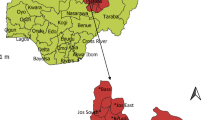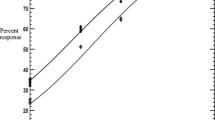Abstract
The aim of this study was to reveal communal farmer’s knowledge, attitudes and practice on ticks and tick-borne diseases affecting cattle, tick control methods used and their knowledge on acaricide resistance. A total of 160 structured questionnaires are prepared and randomly administered to cattle farmers in Sinqu and Elundini communities in the Eastern Cape Province, South Africa. Associations between the area, gender, age, employment, source of income, level of education and farming experience were statistically tested using Chi-square test. Gall sickness (63%) was the most prevailing tick-borne disease in cattle during the summer season (61%). About 59% of the farmers had no knowledge of the effect of tick-borne diseases on cattle production, and 78% of respondents reported that ticks are the major challenge to cattle farming. Pour-on (61%) was the most commonly used acaricidal treatment system with every fortnight (40%) treatment frequency during the summer season and (31%) during the winter season. Pyrethroids (73%) were the most used acaricide compounds to control ticks, and about 65% of respondents perceived to have no knowledge of the use of ethnoveterinary medicines used to control ticks. Inefficacy of acaricide (44%) and undipped animals (42%) were regarded as the major contributing factors to the increased tick population and acaricide resistance. About 85% of respondents perceived that they do not practice acaricide rotation and 88% of the respondents had no knowledge of the acaricide resistance. Within the context of this study, ticks and tick-associated diseases are perceived by these farmers as the most important disease problem their cattle face. Thus, knowledge regarding the epidemiology of ticks and tick-borne diseases is key to control strategies, and farmer training should be encouraged to achieve better control of ticks and the diseases they transmit.

Similar content being viewed by others
References
Adakal, H., et al., 2013. Alarming spread of the Asian cattle tick Rhipicephalus microplus in West Africa—another three countries are affected: Burkina Faso, Mali and Togo. Experimental and Applied Acarology, 61, 383–386. doi:https://doi.org/10.1007/s10493-013-9706-6
Bekele, T., 2002. Studies on Seasonal Dynamics of Ticks of Ogaden Cattle and Individual Variation in Resistance to Ticks in Eastern Ethiopia. Journal of Veterinary Medicine Series B, 49, 285–288. doi:https://doi.org/10.1046/j.1439-0450.2002.00567.x
Busch, J.D., et al., 2014. Widespread movement of invasive cattle fever ticks (Rhipicephalus microplus) in southern Texas leads to shared local infestations on cattle and deer. Parasites & Vectors, 7, 188. doi:https://doi.org/10.1186/1756-3305-7-188
Chenyambuga, S. W., et al., 2010. Knowledge and perceptions of traditional livestock keepers on tick-borne diseases and sero-prevalence of Theileria parva around Lake Victoria Basin. Livestock Research for Rural Development, 22(7). Available at: http://www.lrrd.org/lrrd22/7 (Accessed 13 November 2019).
Covarrubias, K., Nsiima, L. and Zezza, A., 2012. Livestock and livelihoods in rural Tanzania : a descriptive analysis of the 2009 national panel survey. http://www.africalivestockdata.org/sites/africalivestockdata.org/files/PAP_LIV_TZ_LSMS-ISA_July_!2.pdf. ().
De Clercq, E.M., et al., 2012. Geographic distribution of the invasive cattle tick Rhipicephalus microplus, a country-wide survey in Benin. Experimental and Applied Acarology, 58, 441–452. doi:https://doi.org/10.1007/s10493-012-9587-0
de Garine-Wichatitsky, M., et al., 2013. Coexisting with wildlife in transfrontier conservation areas in Zimbabwe: Cattle owners’ awareness of disease risks and perceptions of the role played by wildlife. Comparative Immunology, Microbiology and Infectious Diseases, 36, 321–332. doi:https://doi.org/10.1016/j.cimid.2012.10.007
De Meneghi, D., Stachurski, F. and Adakal, H., 2016. Experiences in Tick Control by Acaricide in the Traditional Cattle Sector in Zambia and Burkina Faso: Possible Environmental and Public Health Implications. Frontiers in Public Health, 4, 239. doi:https://doi.org/10.3389/fpubh.2016.00239
Hlatshwayo, M. and Mbati, P.A., 2005. A survey of tick control methods used by resource-poor farmers in the Qwa-Qwa area of the eastern Free State Province, South Africa. Onderstepoort Journal of Veterinary Research, 72, 245–9. doi:https://doi.org/10.4102/ojvr.v72i3.202
Horak, I.G., Gallivan, G.J. and Spickett, A.M., 2011. The dynamics of questing ticks collected for 164 consecutive months off the vegetation of two landscape zones in the Kruger National Park (1988–2002). Part I. Onderstepoort Journal of Veterinary Research, 78, 32. doi:https://doi.org/10.4102/ojvr.v78i1.32
Horak, I.G., et al., 2009. Species composition and geographic distribution of ticks infesting cattle, goats and dogs in a temperate and in a subtropical region of south-east Africa. Onderstepoort Journal of Veterinary Research, 76, 263–76. doi:https://doi.org/10.4102/ojvr.v76i3.28
Katiyatiya, C.L.F., Muchenje, V. and Mushunje, A., 2014. Farmers’ perceptions and knowledge of cattle adaptation to heat stress and tick resistance in the eastern cape, South Africa. Asian-Australasian Journal of Animal Sciences, 27, 1663–70. doi:https://doi.org/10.5713/ajas.2014.14174
Kristjanson, P., et al., 2014. Livestock and Women’s Livelihoods, in: Gender in Agriculture. Springer Netherlands, Dordrecht, pp. 209–233. doi:https://doi.org/10.1007/978-94-017-8616-4_9
Lorusso, V., et al., 2013. Ixodid ticks of traditionally managed cattle in central Nigeria: where Rhipicephalus (Boophilus) microplus does not dare (yet?). Parasites & Vectors, 6, 171. doi:https://doi.org/10.1186/1756-3305-6-171
Scholtz, M.M., et al., 2008. Results of the national cattle survey undertaken in South Africa, with emphasis on beef. Applied Animal Husbandry& Rural Development, 1, 1–9.
Mariner, J.C., et al., 2011. Integration of participatory approaches into surveillance systems. Revue Scientifique et Technique de l’OIE, 30, 653–659. doi:https://doi.org/10.20506/rst.30.3.2065
Marufu, M.C., et al., 2010. Seroprevalence of tick-borne diseases in communal cattle reared on sweet and sour rangelands in a semi-arid area of South Africa. The Veterinary Journal, 184, 71–76. doi:https://doi.org/10.1016/j.tvjl.2009.02.014
Mdungela, N.M., Bahta, Y.T. and Jordaan, A.J., 2017. Indicators for economic vulnerability to drought in South Africa. Development in Practice, 27, 1050–1063. doi:https://doi.org/10.1080/09614524.2017.1361384
Minjauw, B. and McLeod, A., 2003. Tick-borne diseases and poverty: the impact of ticks and tick-borne diseases on the livelihoods of small-scale and marginal livestock owners in India and eastern and southern Africa. Research report, DFID Animal Health Programme, Centre for Tropical Veterinary Medicine, University of Edinburgh, UK.
Moyo, B. and Masika, J.P., 2009. Tick control methods used by resource-limited farmers and the effect of ticks on cattle in rural areas of the Eastern Cape Province, South Africa. Tropical Animal Health and Production, 41, 517-523.
Muchenje, V., et al., 2008. Tick susceptibility and its effects on growth performance and carcass characteristics of Nguni, Bonsmara and Angus steers raised on natural pasture. Animal International Journal of Animal Bioscience, 2, 298–304. doi:https://doi.org/10.1017/S1751731107001036
Mucina, L. and Rutherford, M.C., 2006. The vegetation of South Africa, Lesotho and Swaziland. South African National Biodiversity Institute.
Musemwa, L., et al., 2008. Nguni cattle marketing constraints and opportunities in the communal areas of South Africa: Review. African Journal of Agricultural Research, 3, 239–245.
Ndhlovu, D.N. and Masika, P.J., 2013. Ethno-veterinary control of bovine dermatophilosis and ticks in Zhombe, Njelele and Shamrock resettlement in Zimbabwe. Tropical Animal Health and Production, 45, 525–532. doi:https://doi.org/10.1007/s11250-012-0253-7
Statistical Analysis System (SAS)., 2003. Statistical Analysis System Institute Inc. User Guide, Release 9.1, Carry, NC, USA.
Sungirai, M., et al., 2015. An update on the ecological distribution of the Ixodidae ticks in Zimbabwe. Experimental and Applied Acarology, 66, 269–280. doi:https://doi.org/10.1007/s10493-015-9892-5
Sungirai, M., et al., 2016. Communal farmers’ perceptions of tick-borne diseases affecting cattle and investigation of tick control methods practiced in Zimbabwe. Ticks and Tick-Borne Diseases, 7, 1–9. doi:https://doi.org/10.1016/j.ttbdis.2015.07.015
Willadsen, P., 2004. Anti-tick vaccines. Parasitology, 129, 367-387 doi:https://doi.org/10.1016/j.ttbdis.2016.01.007
Yawa, M., et al., 2018. Ecological preferences and seasonal dynamics of ticks (Acari: Ixodidae) on and off bovine hosts in the Eastern Cape Province, South Africa. Experimental and Applied Acarology, 74, 317–328.
Acknowledgements
We express our thanks to the Joe Gqabi District, Department of Rural Development and Agrarian Reform (DRDAR), for their assistance during this study. We are grateful to the farmers who participated during the collection of the data.
Funding
We value the financial support from National Research Foundation (NRF) (Grant number: 102941) for this study.
Author information
Authors and Affiliations
Corresponding author
Ethics declarations
Conflict of interest
The authors declare that they have no conflict of interest.
Disclaimer
The grant holder acknowledges that opinions, findings and conclusions or recommendations expressed in any publication generated by the NRF-supported research are those of the authors and are not necessarily to be attributed to the NRF.
Additional information
Publisher’s note
Springer Nature remains neutral with regard to jurisdictional claims in published maps and institutional affiliations.
Rights and permissions
About this article
Cite this article
Yawa, M., Nyangiwe, N., Jaja, I.F. et al. Communal cattle farmer’s knowledge, attitudes and practices on ticks (Acari: Ixodidae), tick control and acaricide resistance. Trop Anim Health Prod 52, 3005–3013 (2020). https://doi.org/10.1007/s11250-020-02319-1
Received:
Accepted:
Published:
Issue Date:
DOI: https://doi.org/10.1007/s11250-020-02319-1




